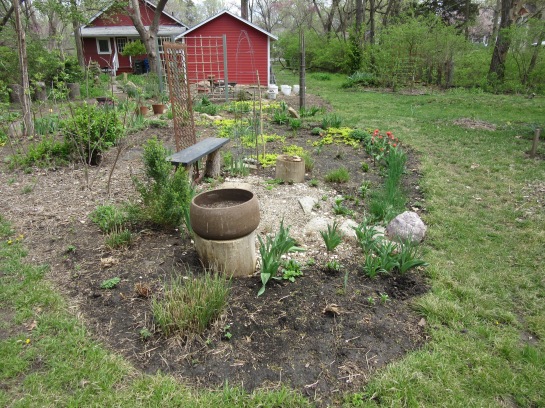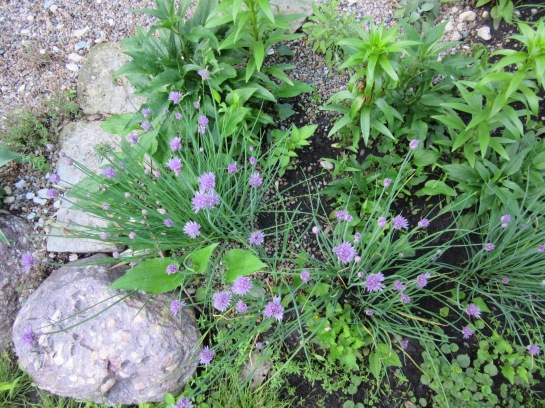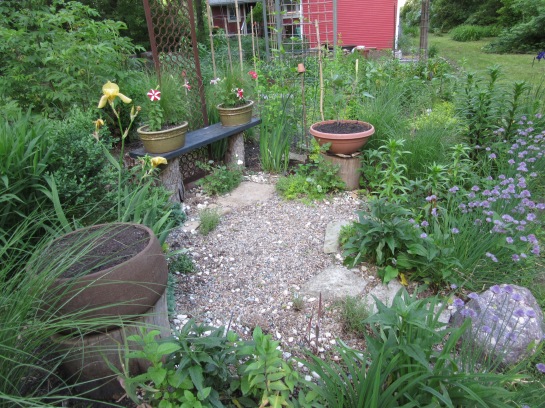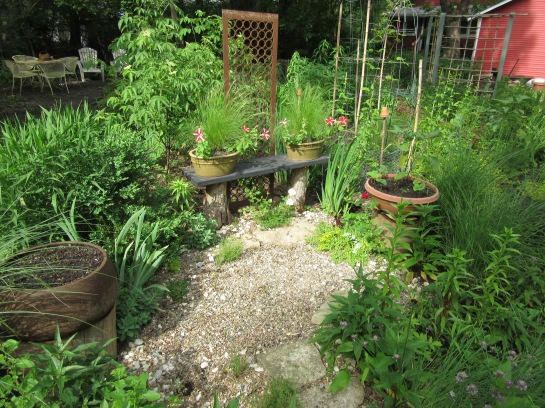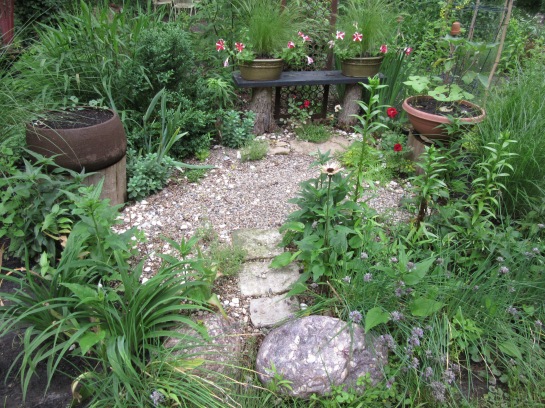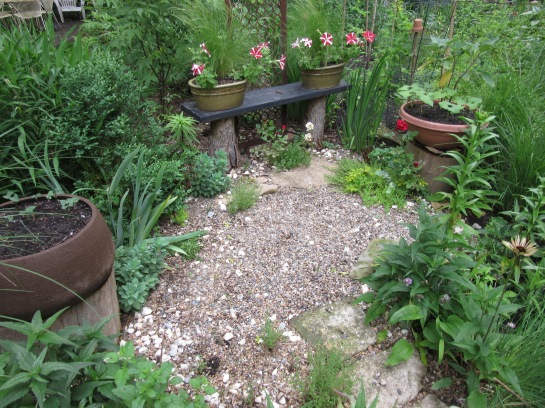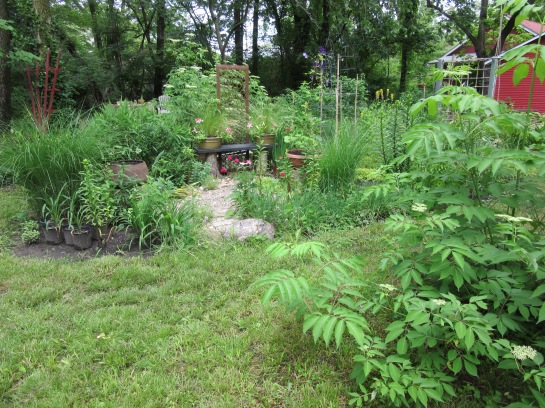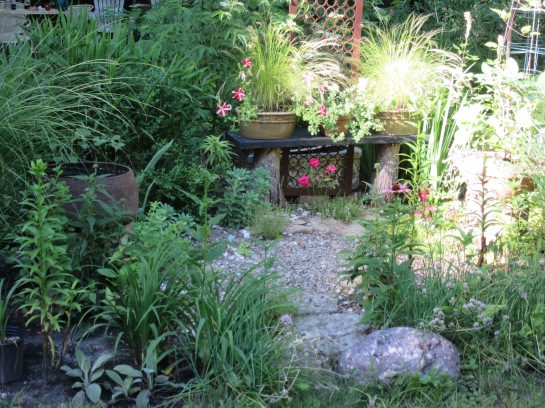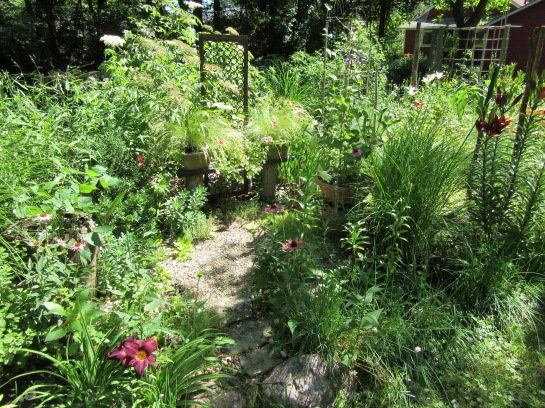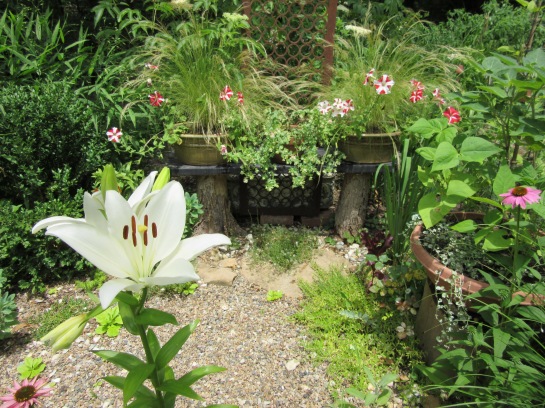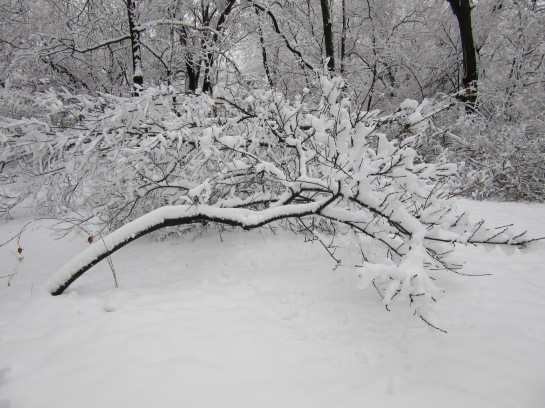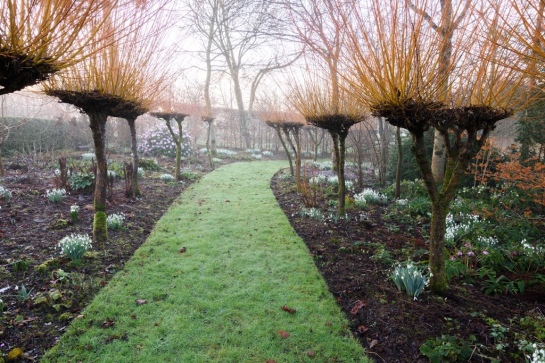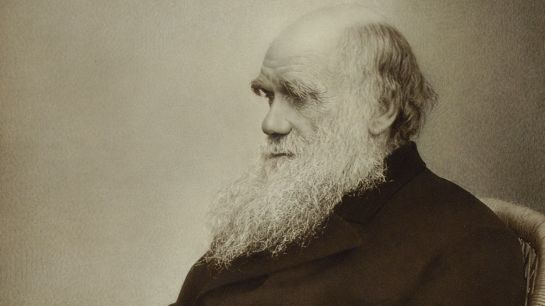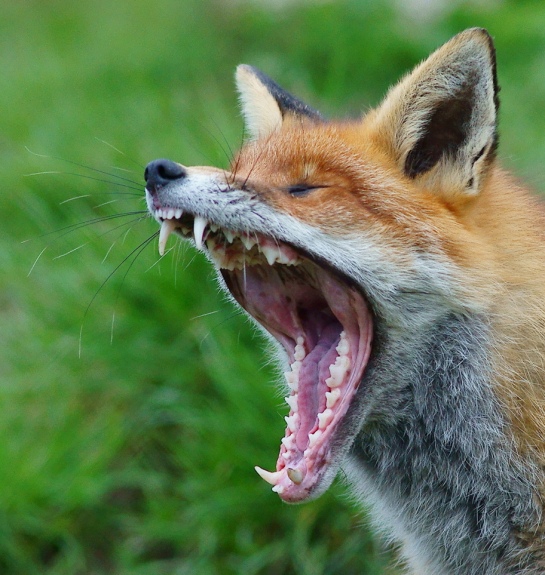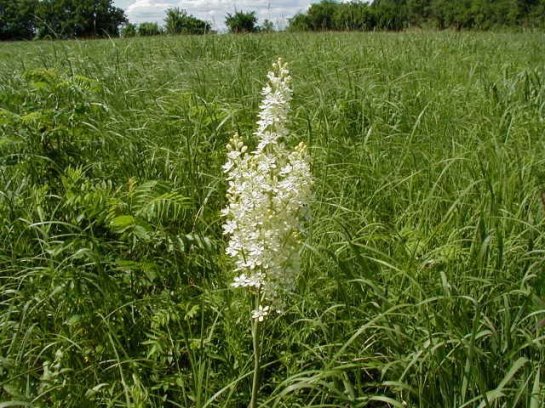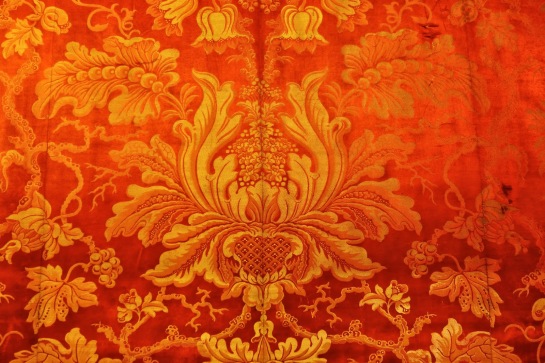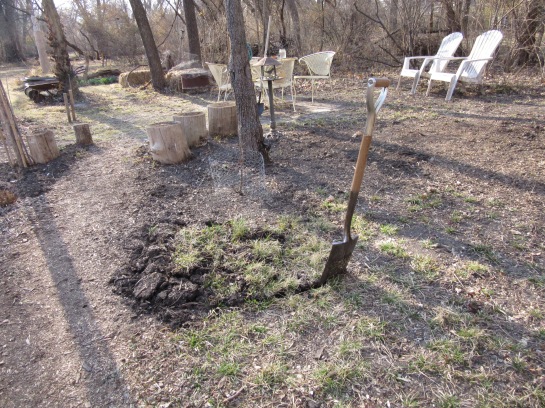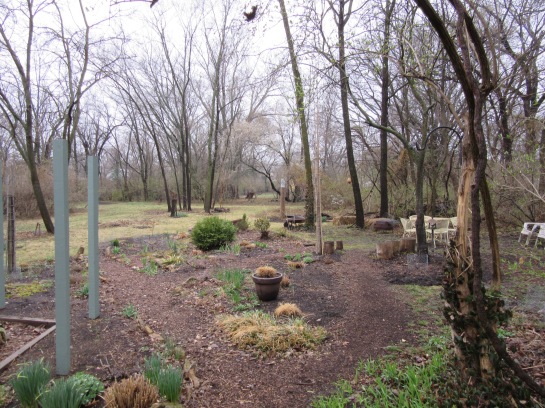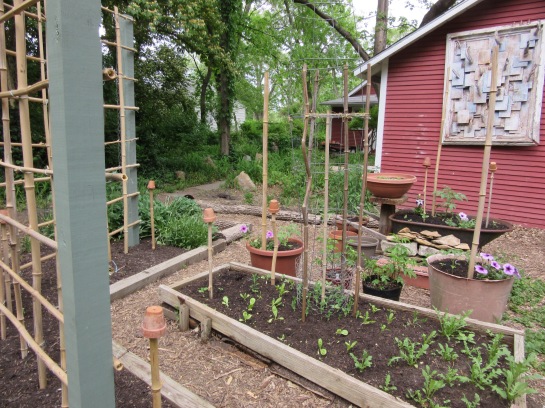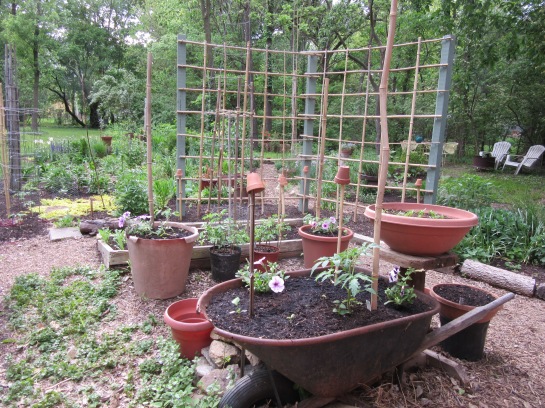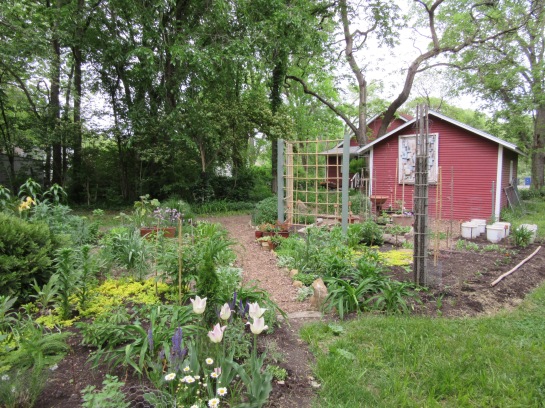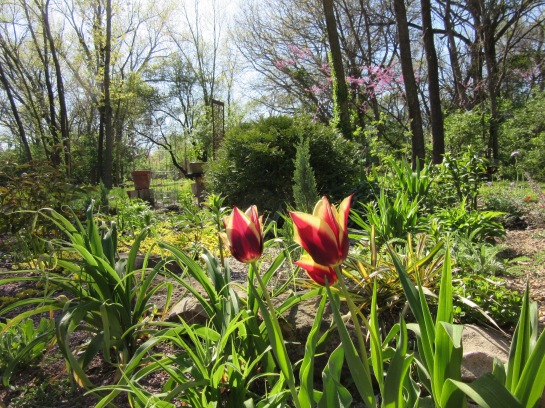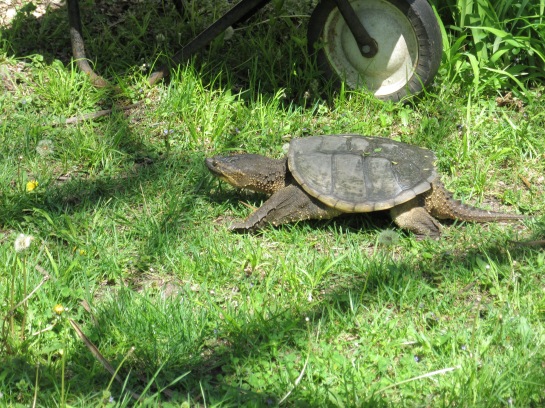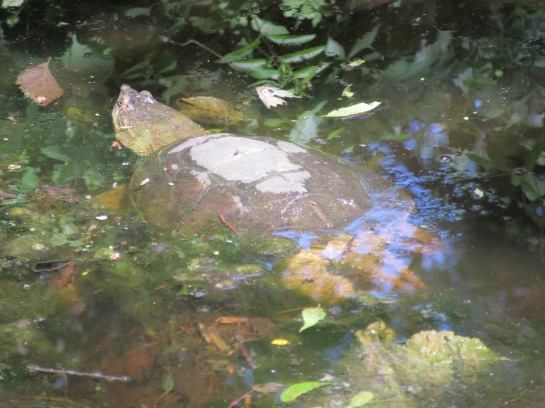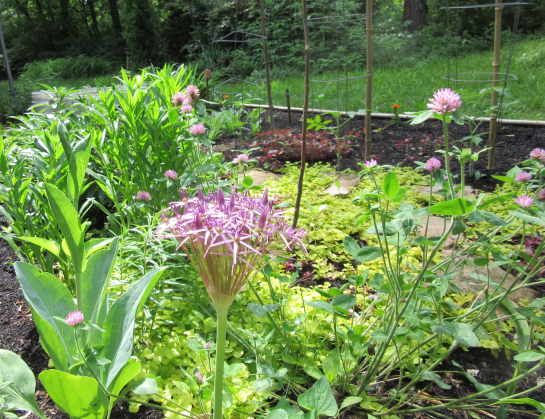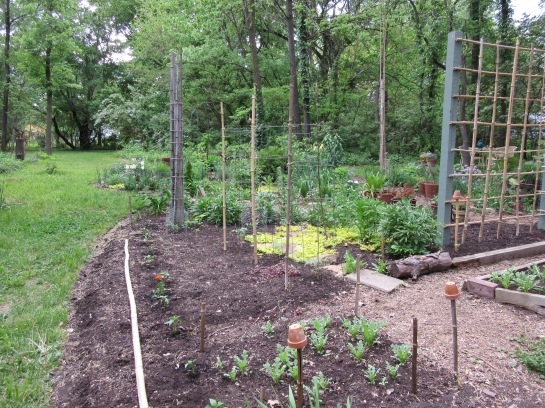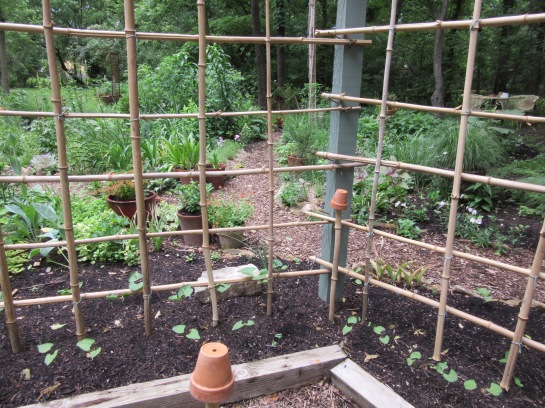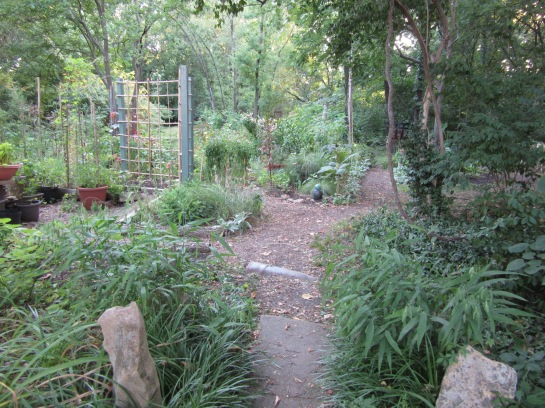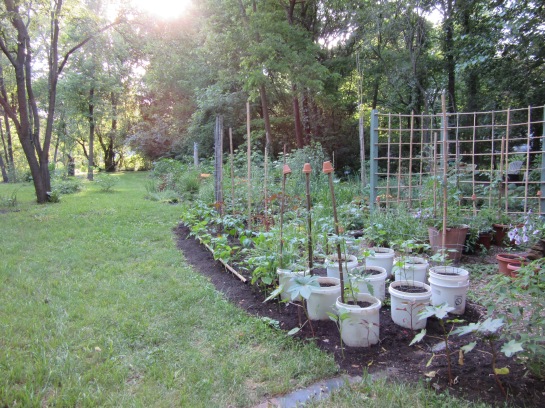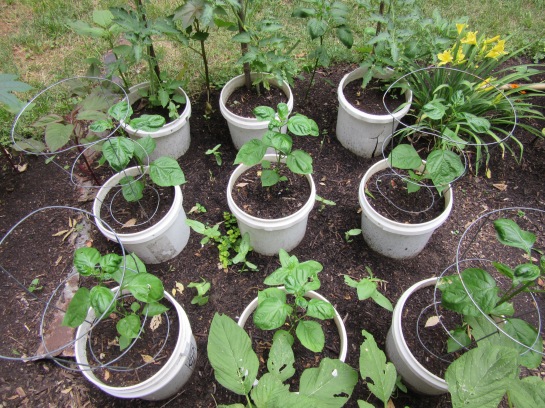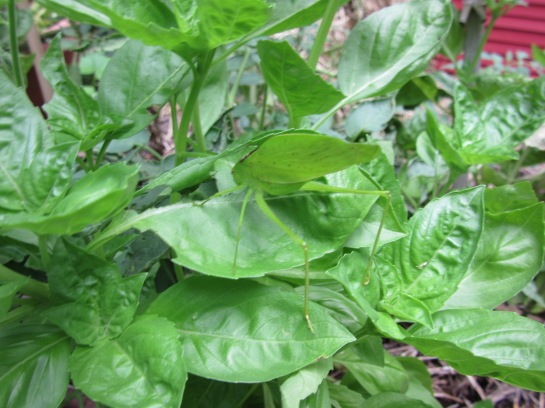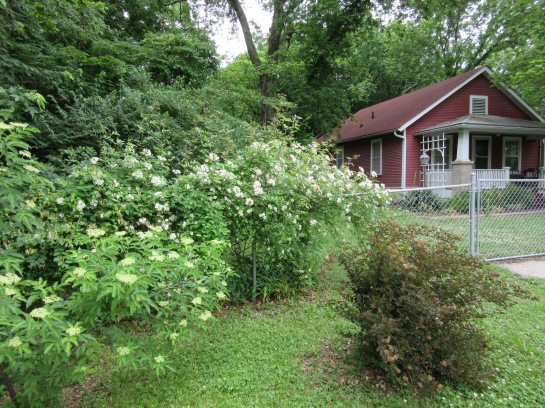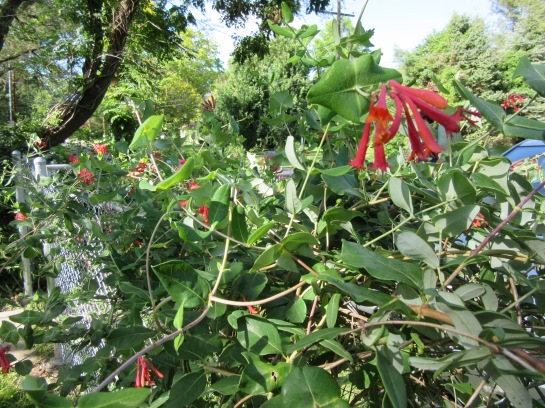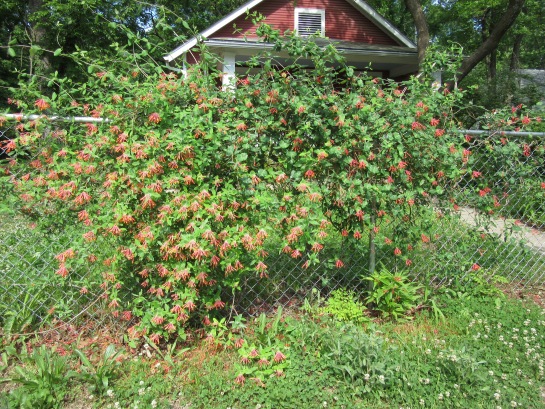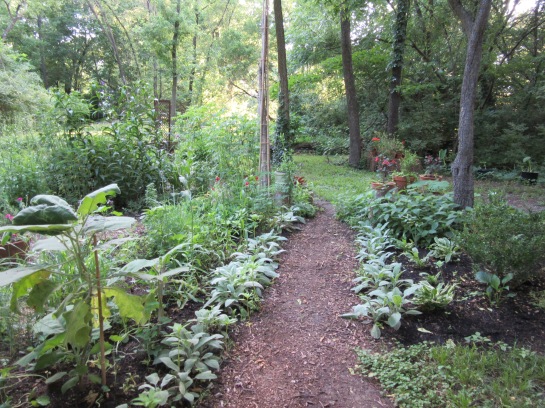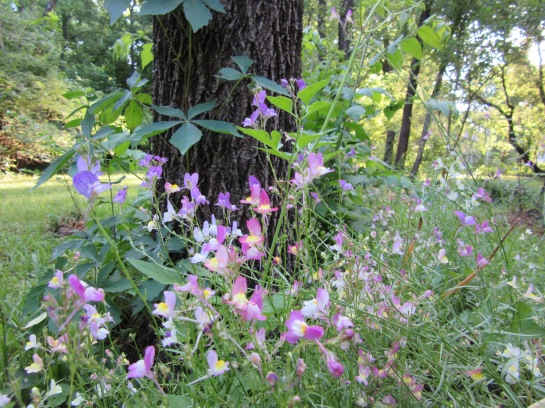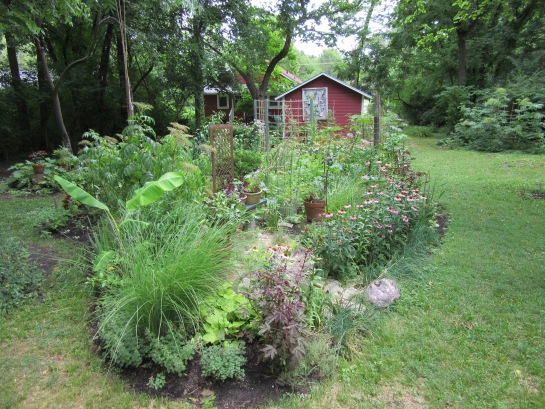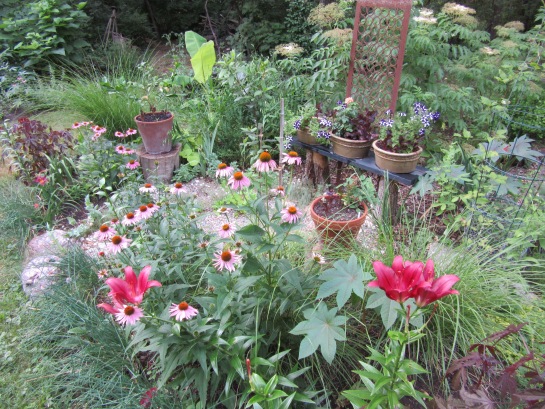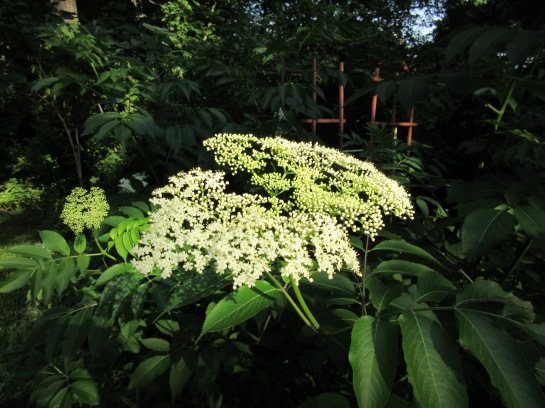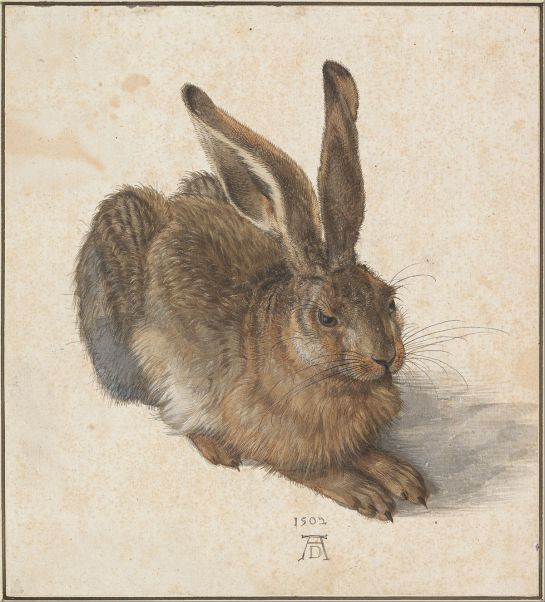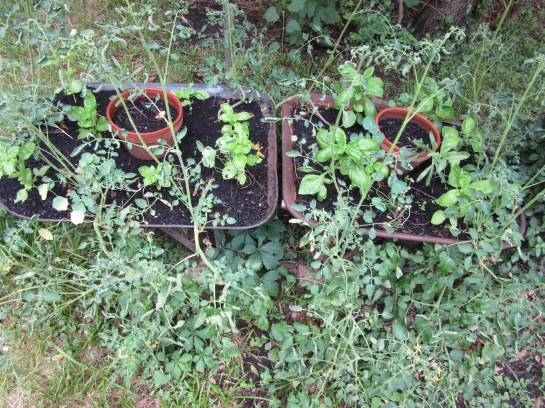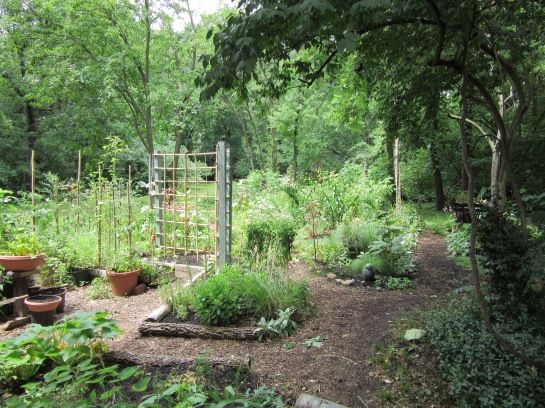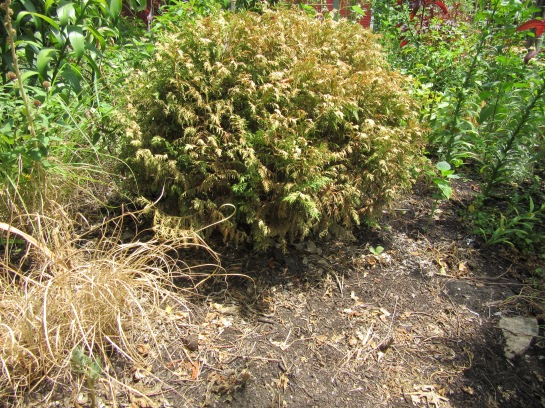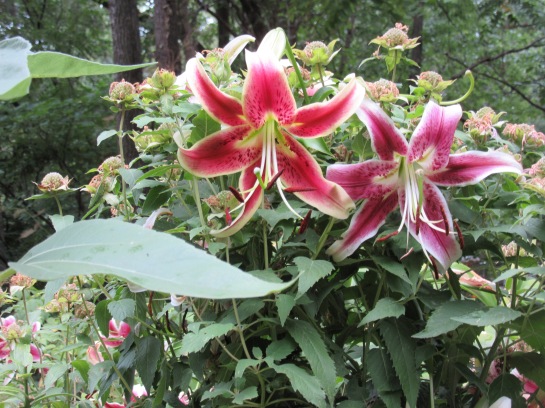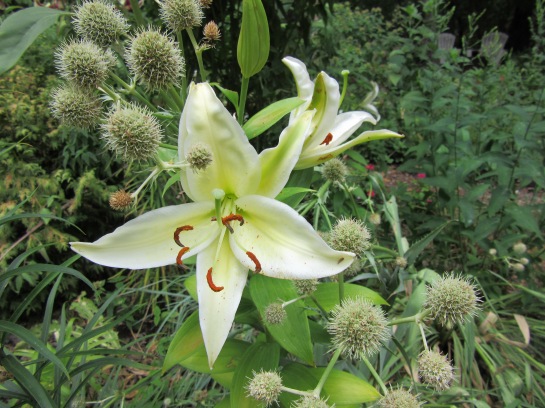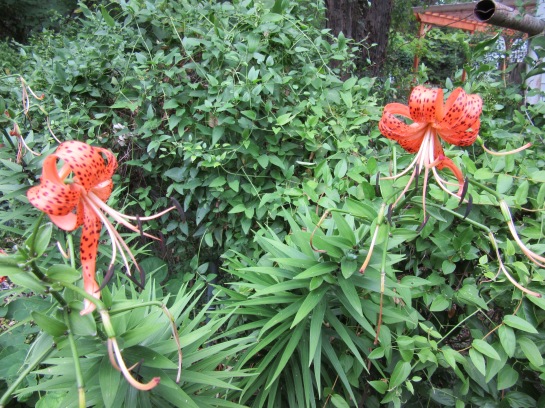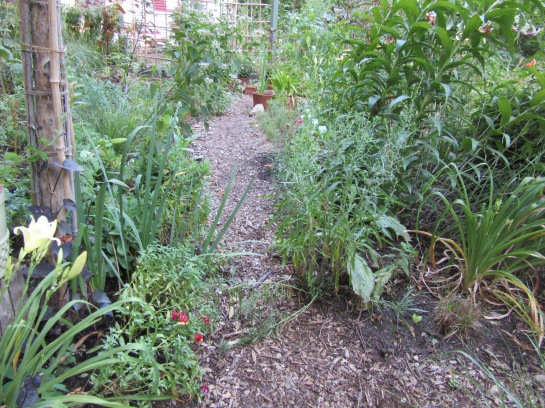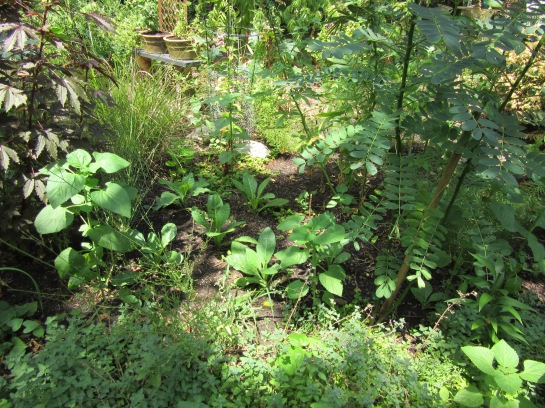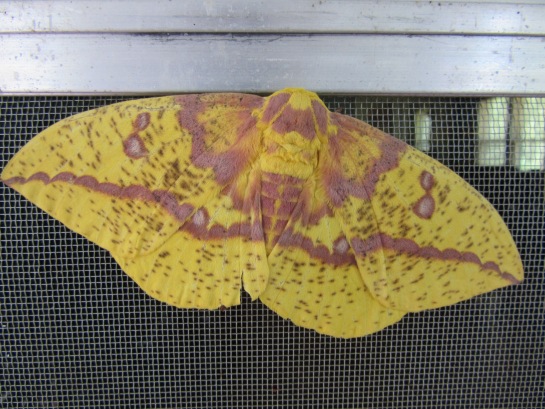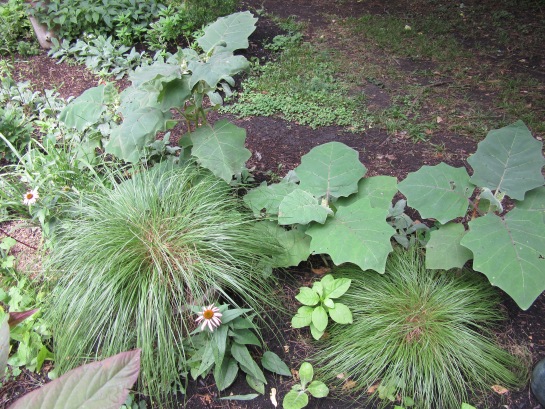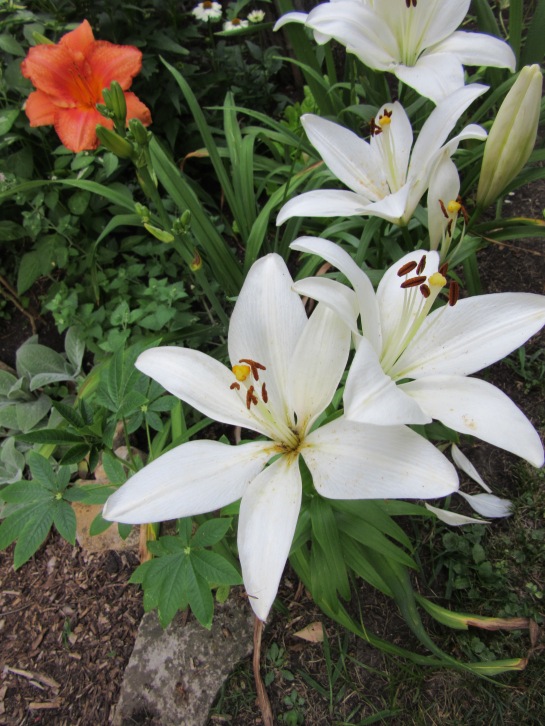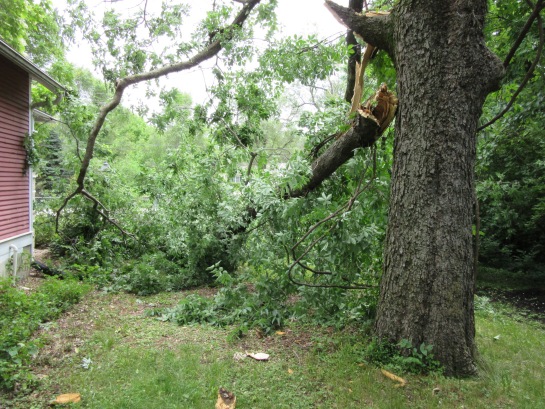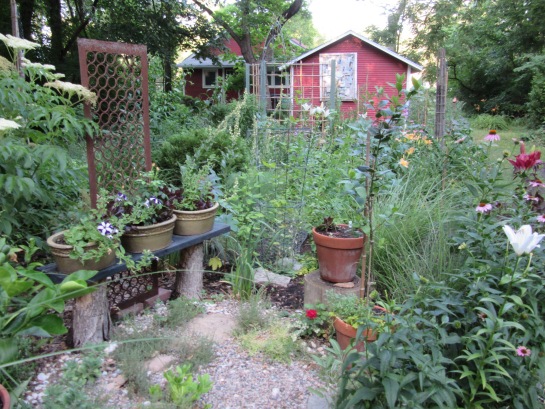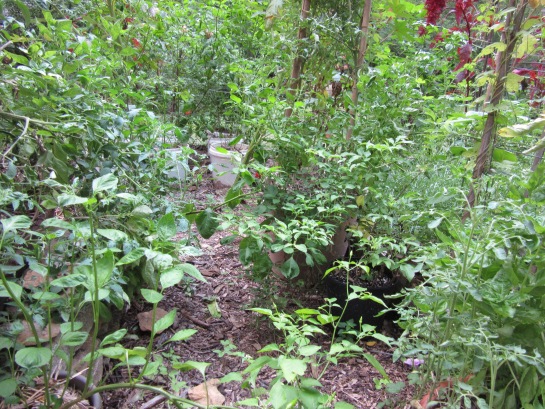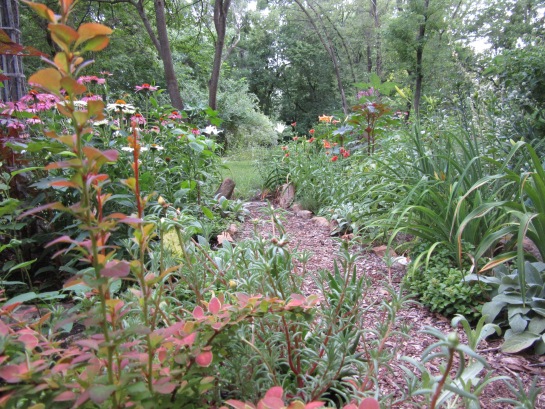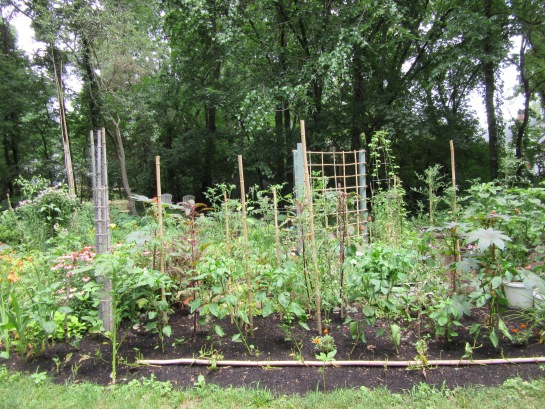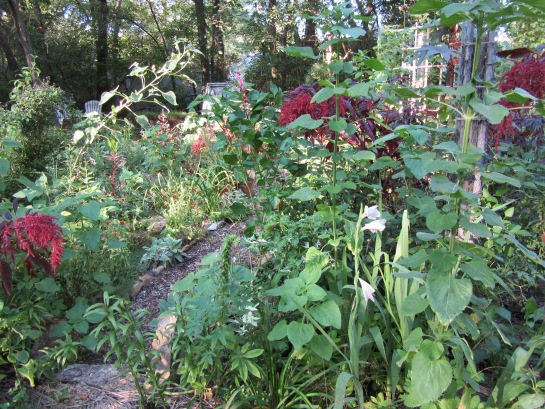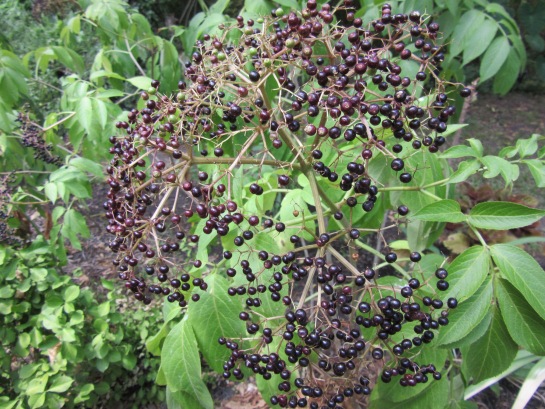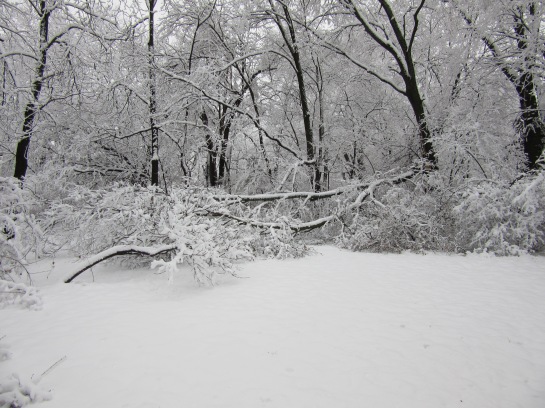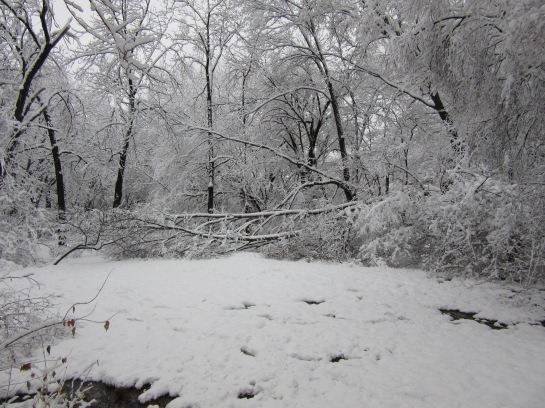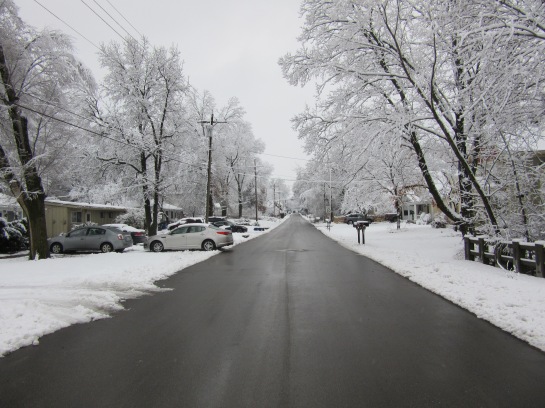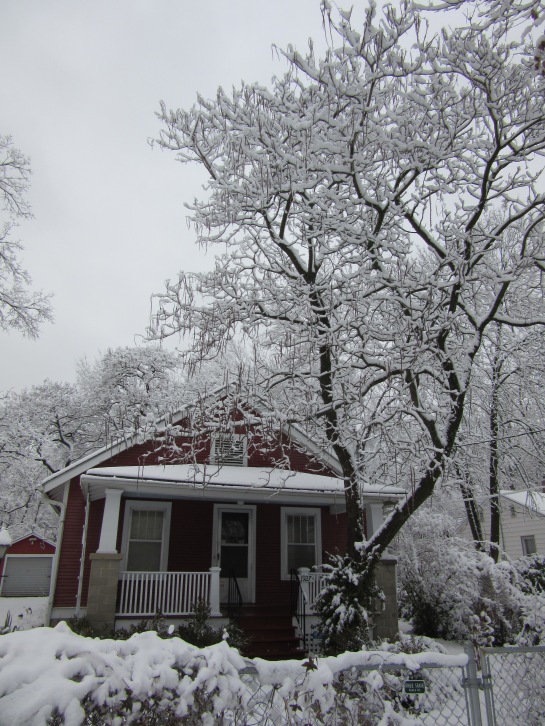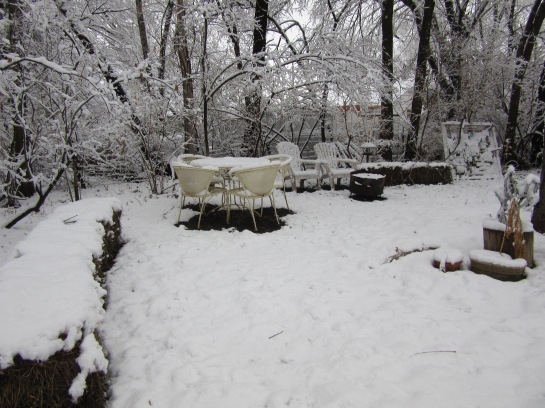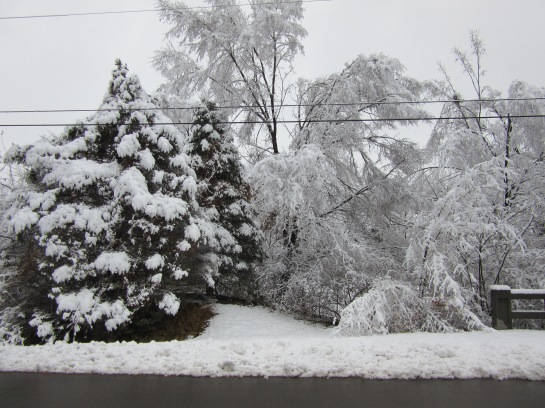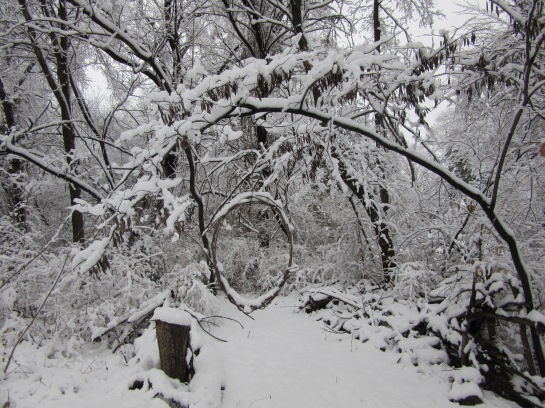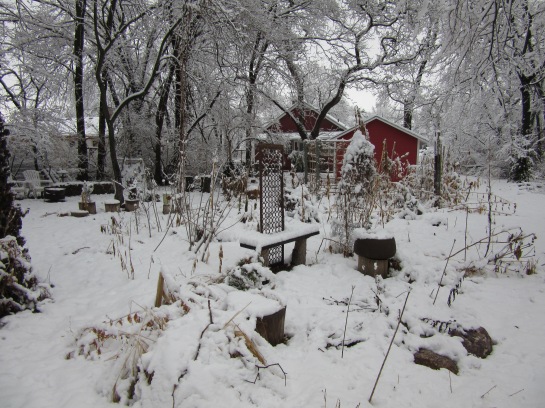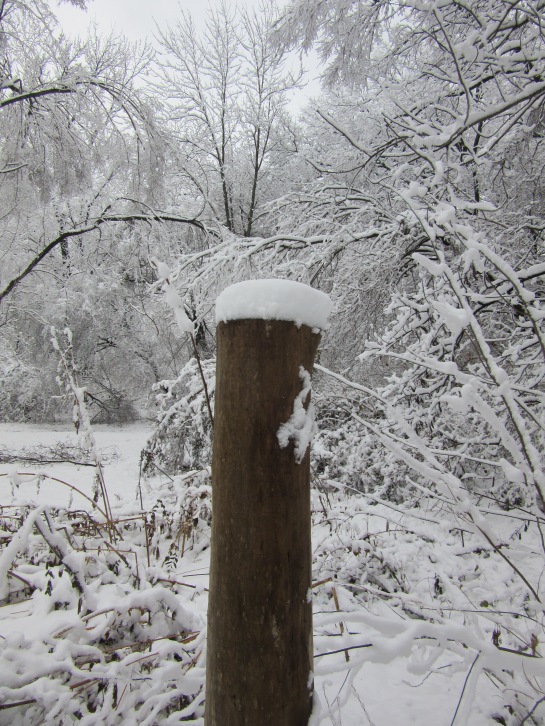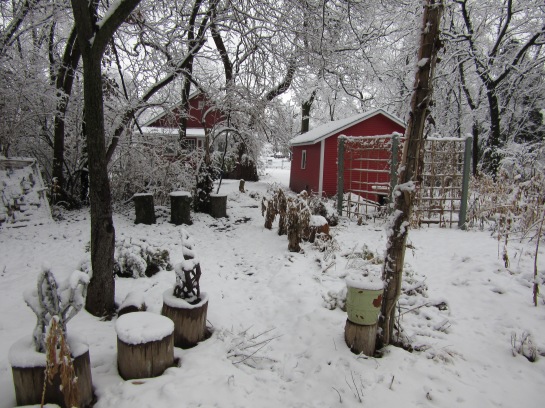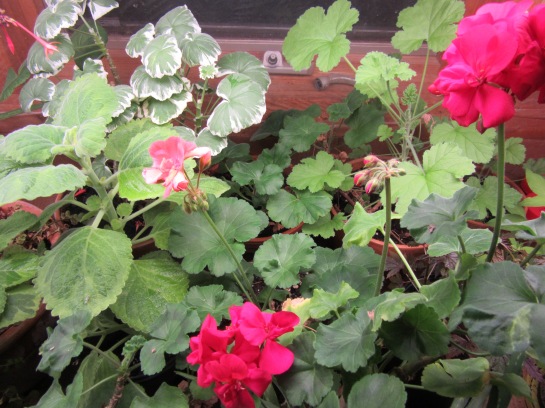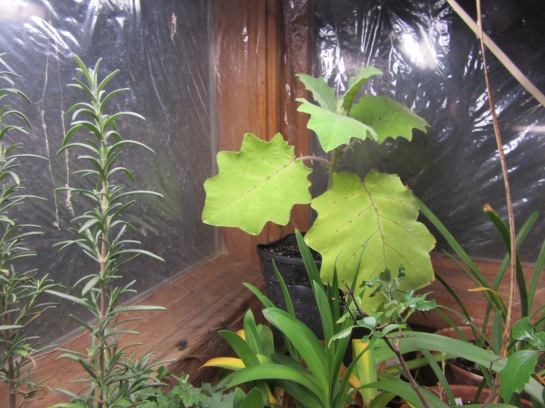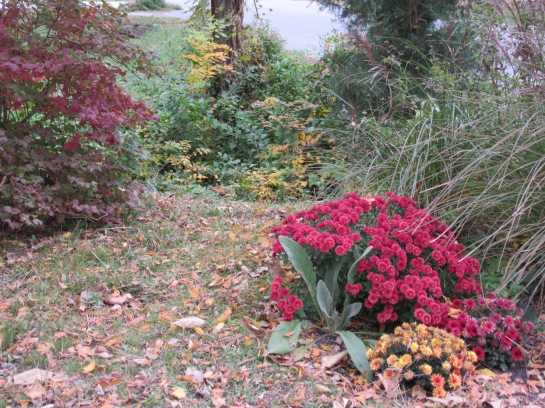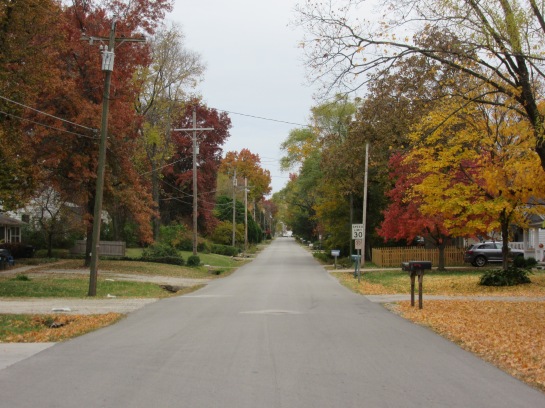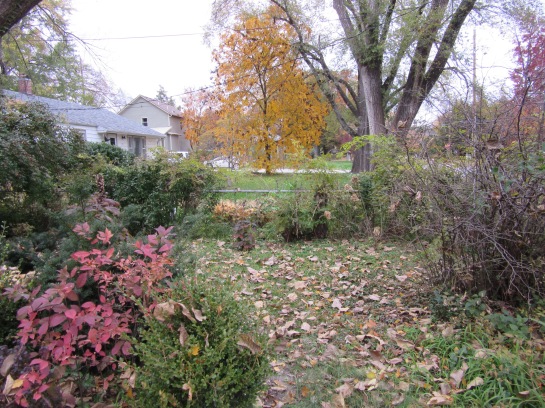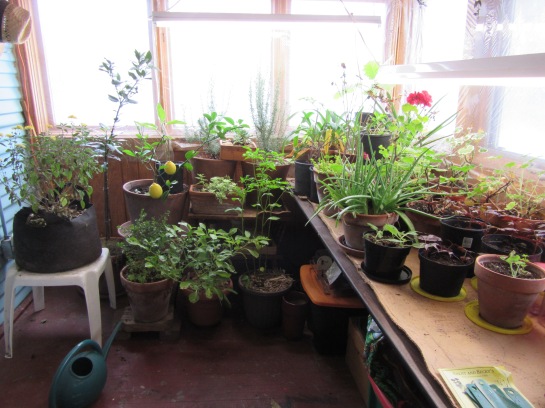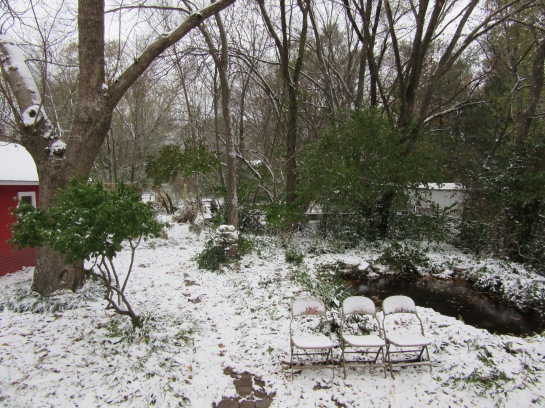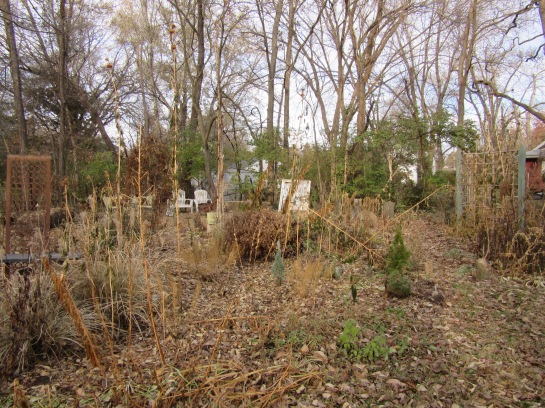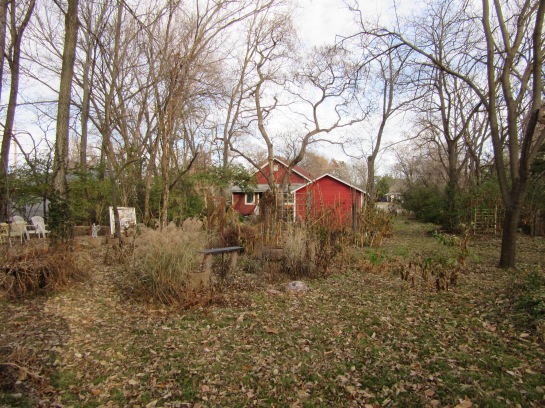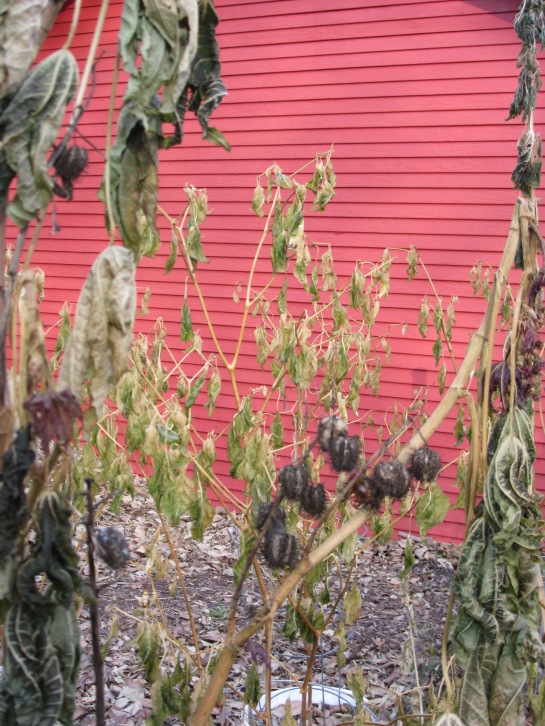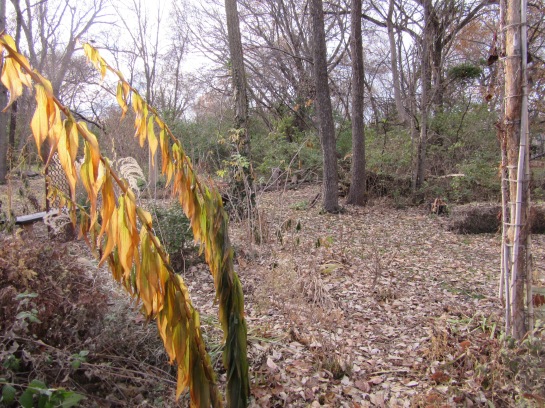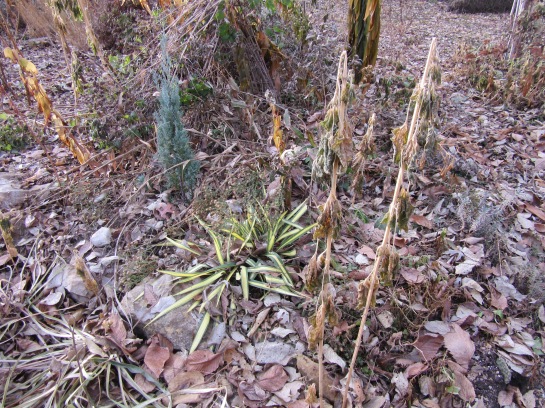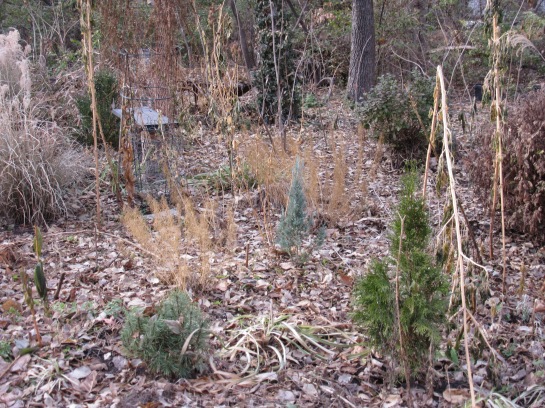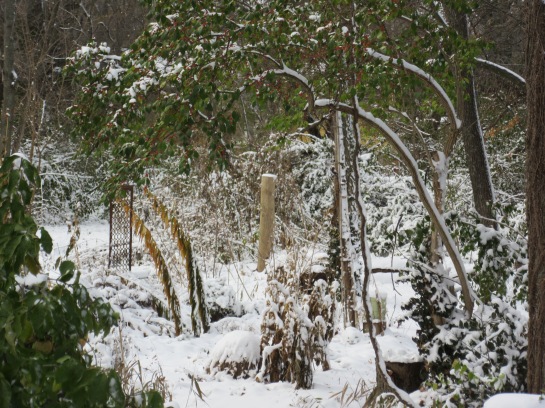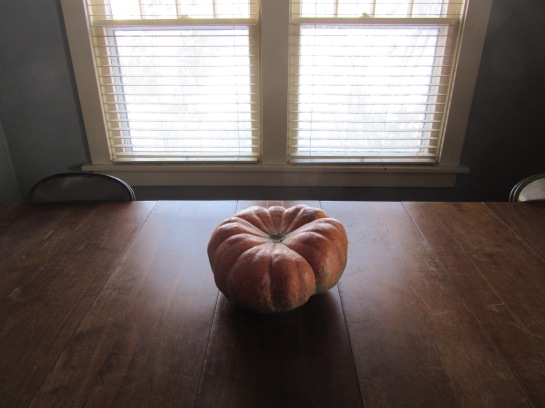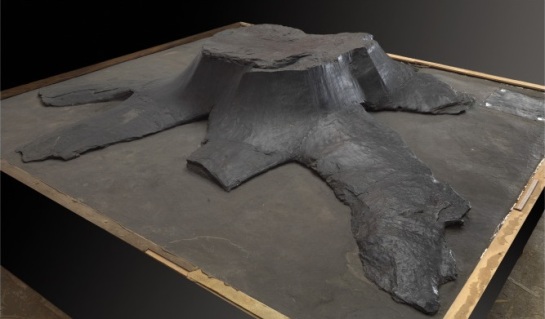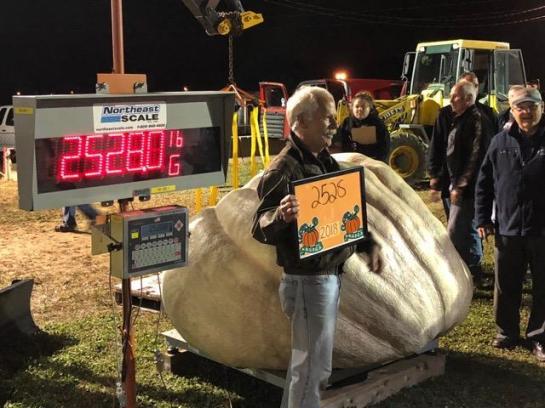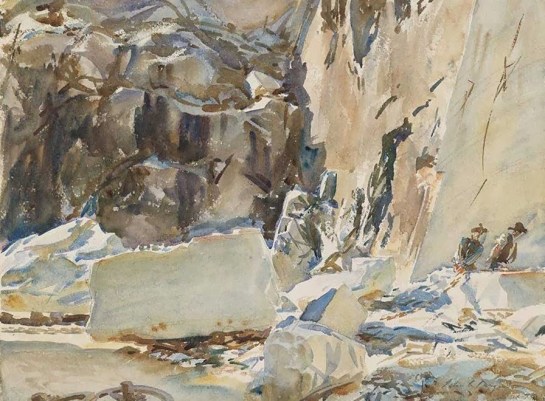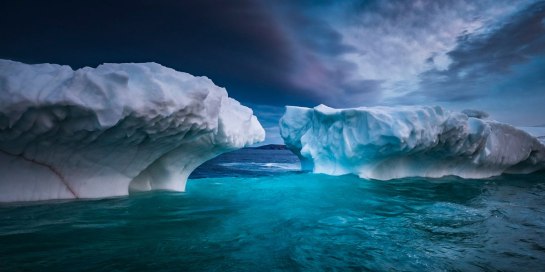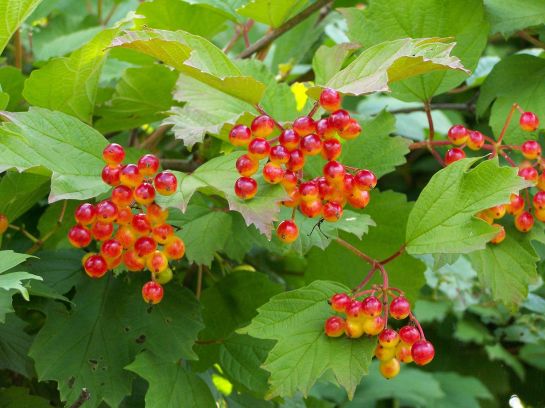
Viburnum opulus, guelder rose, snowball tree, cranberrybush, cramp bark, water elder. To 15 feet tall and wide; showy white flowers; bright red, edible berries; bark used to reduce muscle tightness. Photo Jan Mehlich, Wikimedia Commons.
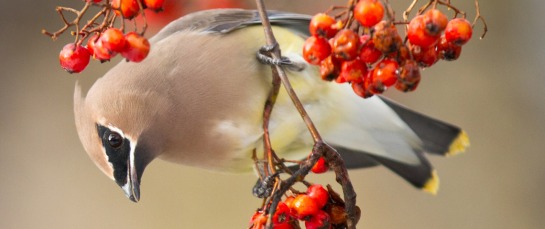
“Whether chasing bugs or lazily dining on fruit, Cedar Waxwings are very sociable. Feeding flocks can include several birds or hundreds, and they seldom squabble even while eating.” Photo and article at Pennington.
Live as if you are going to die tomorrow, garden as if you are going to live forever. – Joan Kipling
When it Rains…Garden!
In large volumes, like after a storm, runoff can be very powerful and damage roadways, overwhelm sewer systems, and erode creeks and rivers, and cause flooding. Healthy landscapes with abundant plantings, rain gardens, and bio-swales slow the flow of runoff and allow the rainwater time to be infiltrate into the soil – ultimately filtering the water and replenishing our ground water aquifers.
Mt. Cuba Center
Wednesday Weed – Pansy
I am always impressed by the way that the plants continue to flower even when there is snow on the ground, although my personal taste leans towards the smaller, more delicate viola-type flowers.
Bug Woman – Adventures in London
International garden photographer of the year – in pictures
The international garden photographer of the year competition specialises in garden, plant, flower and botanical photography. It is run in association with the Royal Botanic Gardens, Kew, where entries are on display until 10 March. The competition is open to everyone, anywhere in the world. Images do not have to be taken in a specified year. There is no distinction drawn between professional and amateur photographers.
The Guardian
Why John Ruskin, Born 200 Years Ago, Is Having a Comeback
Ruskin was appalled by the way industrialization dehumanized workers, stifled creativity and polluted the environment. Using lectures and open letters, he encouraged workers to improve their lives through self-education.
New York Times
Viburnums for American Gardens: Abbreviated Discussion
Viburnums are often tagged as utilitarian, functional, reliable garden denizens without the pizzazz of hydrangea. Viburnums have contributed to every Dirr garden and the newest currently houses 45 species and cultivars.
Michael Dirr’s Plants
Responding to Climate Change in New York City
With global climate change upon us, New York City is already feeling the effects. Rainfall patterns are changing, with more frequent severe storms; the annual mean temperature has risen 3°F in our region since the turn of the 20th century; and coastal areas are becoming increasingly vulnerable to sea level rise.
Brooklyn Botanic Garden
Inside Las Pozas, Edward James’ Surrealist Garden in the Mexican Jungle
Edward James, one of the most eccentric and interesting twentieth-century collectors of surrealist art, arrived in Xilitla, Mexico at the end of the 1940’s. The British writer was captivated by the splendor of the landscape of “Las Pozas” (The Wells), where he created a fantastic home, which includes a unique sculptural space unlike any other in the world.
Arch Daily
Forestiera neomexicana, Desert Olive
Train Desert Olive as a small tree or shrub. Appealing features include the light gray bark, which contrasts nicely with its bright green leaves. Attractive yellow fall color.
Watersmart Plants
Filoli: Garden of a Golden Age
In 1917, William Bowers Bourn II and his wife, Agnes, stepped across the threshold of the Georgian manor he had built 30 miles south of San Francisco. …He called it Filoli, a name he came up with by combining elements of his life’s credo: “Fight for a just cause; Love your fellow man; Live a good life.”
Smithsonian
Maxipiñon: One of the Rarest Pines in the World
The reason for this are its seeds. The maxipiñon is said to produce the largest and most nutritious seeds of all the pines. As such, it is a staple of the regional diet. Conversations with local farmers suggest that it was much more common as recent as 60 years ago.
In Defense of Plants
Cartwright Crocus
Crocus cartwrightianus is an autumn-blooming crocus & believed to be the ancestor of the Saffron Crocus, C. sativus. …Each flower bears the same three enlarged scarlet stigma & three smaller yellow anthers of the Saffron Crocus, but without sufficient flavor of saffron to be a similar source of the spice; so it’s only a False Saffron.
In the Garden of Paghat the Rat Girl
Orach is the new kale!
Jam-packed with vitamins and minerals like calcium, magnesium, anthocyanins, phosphorous, iron, protein, zinc, selenium, tryptophan, vitamin C, vitamin K, carotenes and dietary fibre, orach is a nutrient-rich superfood.
Canadian Living
How Farmers’ Markets Boost Farmers’ Bottom Line
When a sale is made at a farmers’ market, nearly 100% of the income stays in the hands of a producer. Meanwhile, according to the USDA, farmers and ranchers receive less than 16 cents for every dollar generated in revenue through sales at traditional retail outlets.
Forbes
Helping Nature Re-decorate the Abandoned Homes of Detroit
Welcome to the Flower House. a unique project that will see the walls and ceilings of an old dilapidated house filled with up to 100,000 flowers and living plants.
Messy Nessy
We are alone in the universe, or we are not. Either way, it’s a mighty sobering thought. – Walt Kelley.

Simon Beck, made with snowshoes.
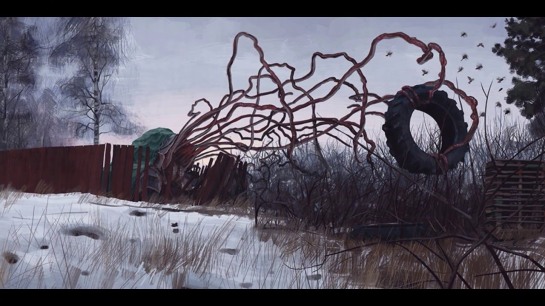
Simon Stalenhag.

